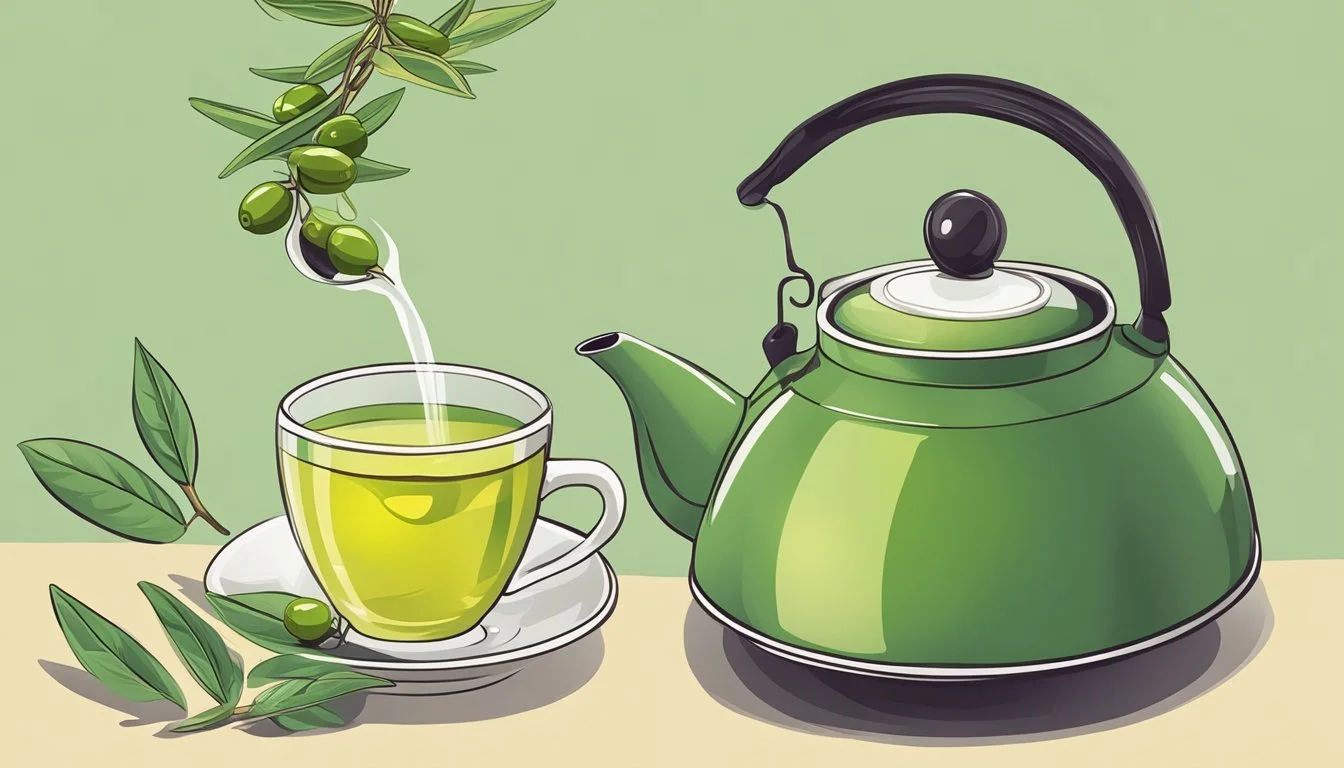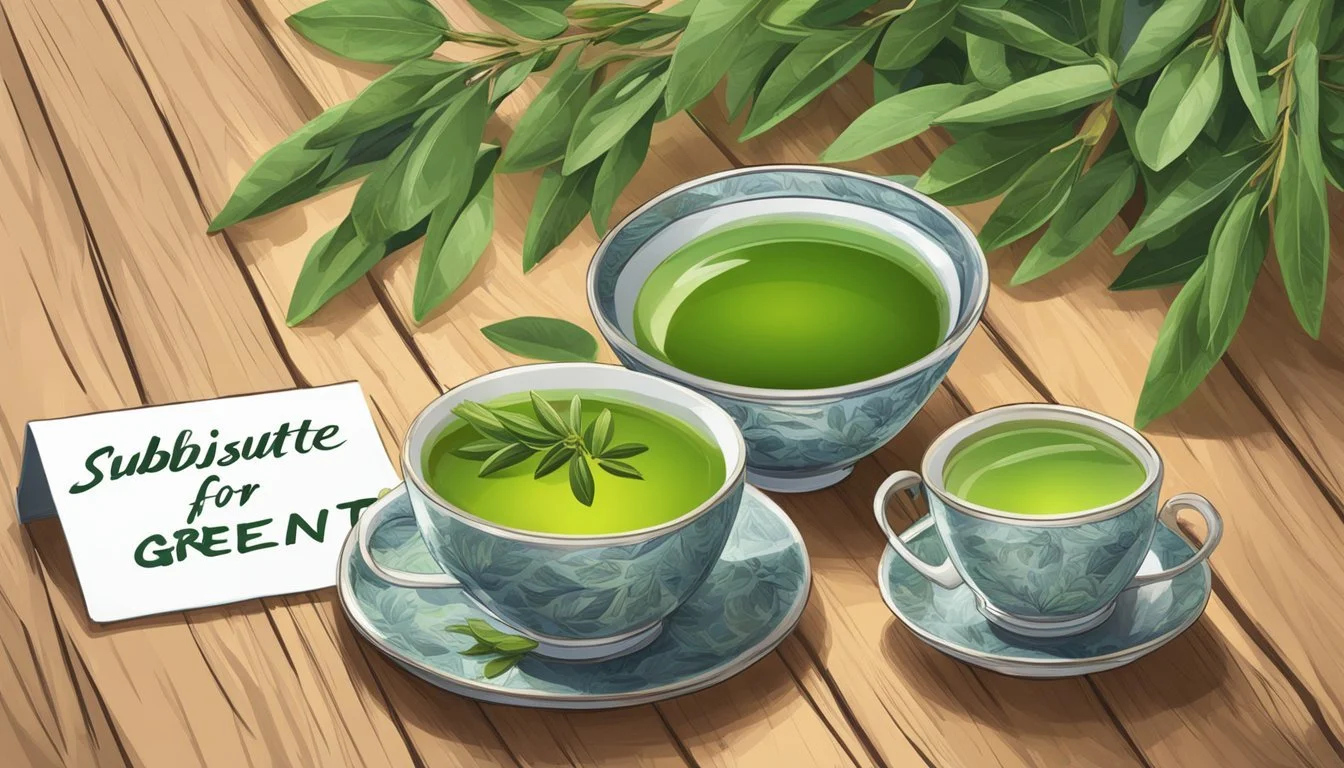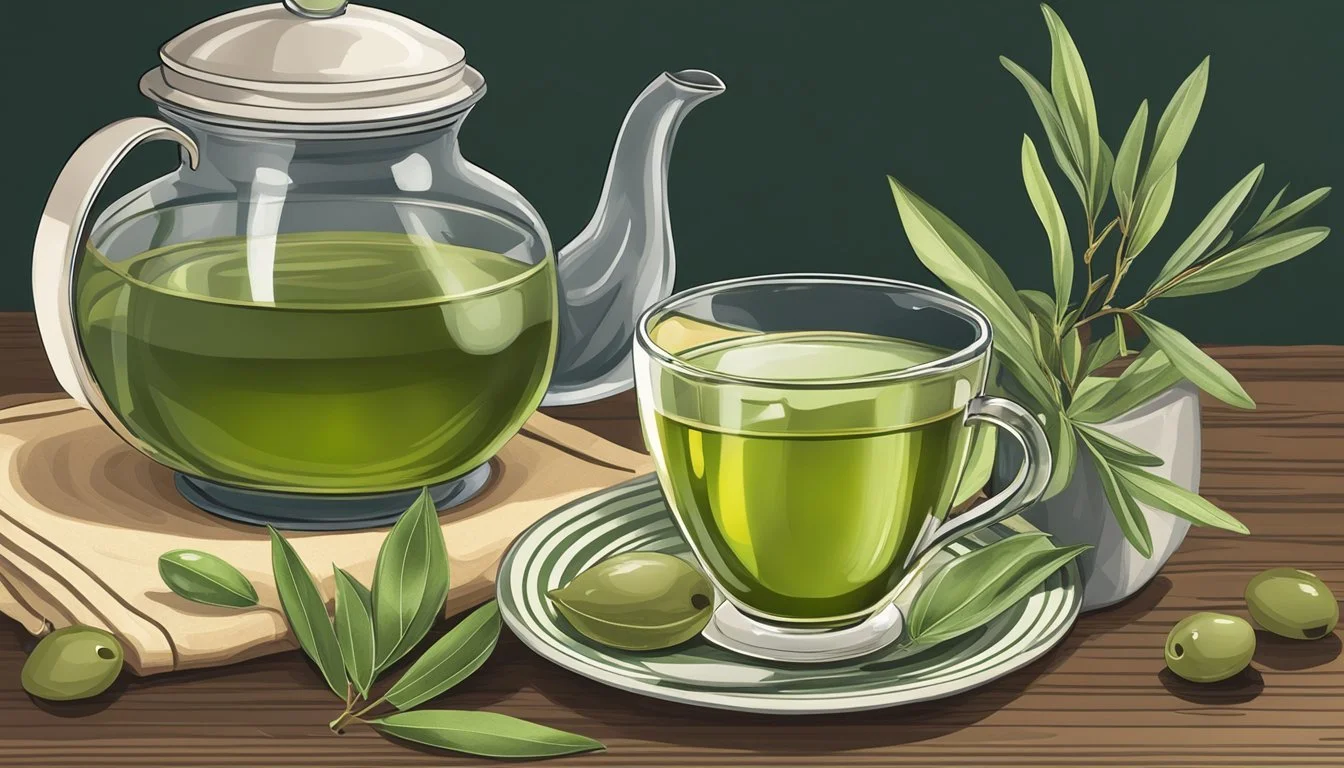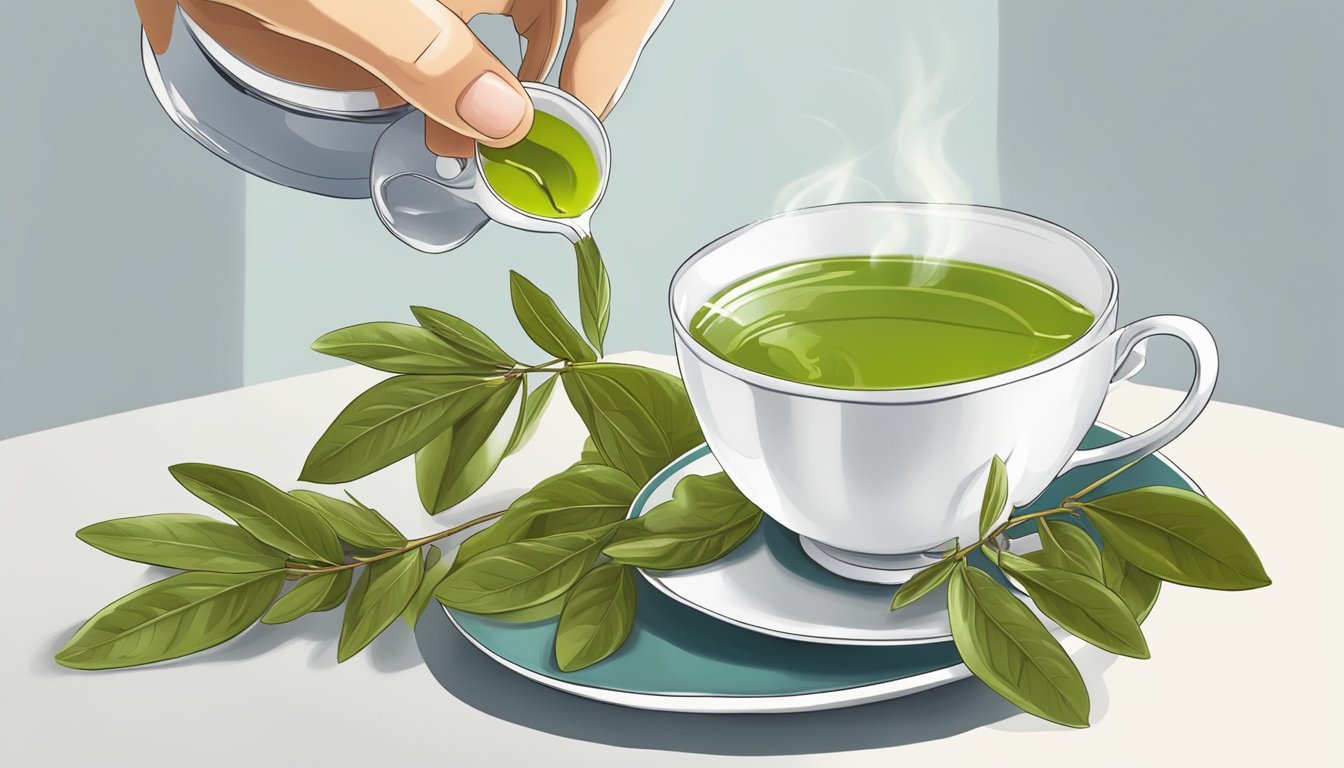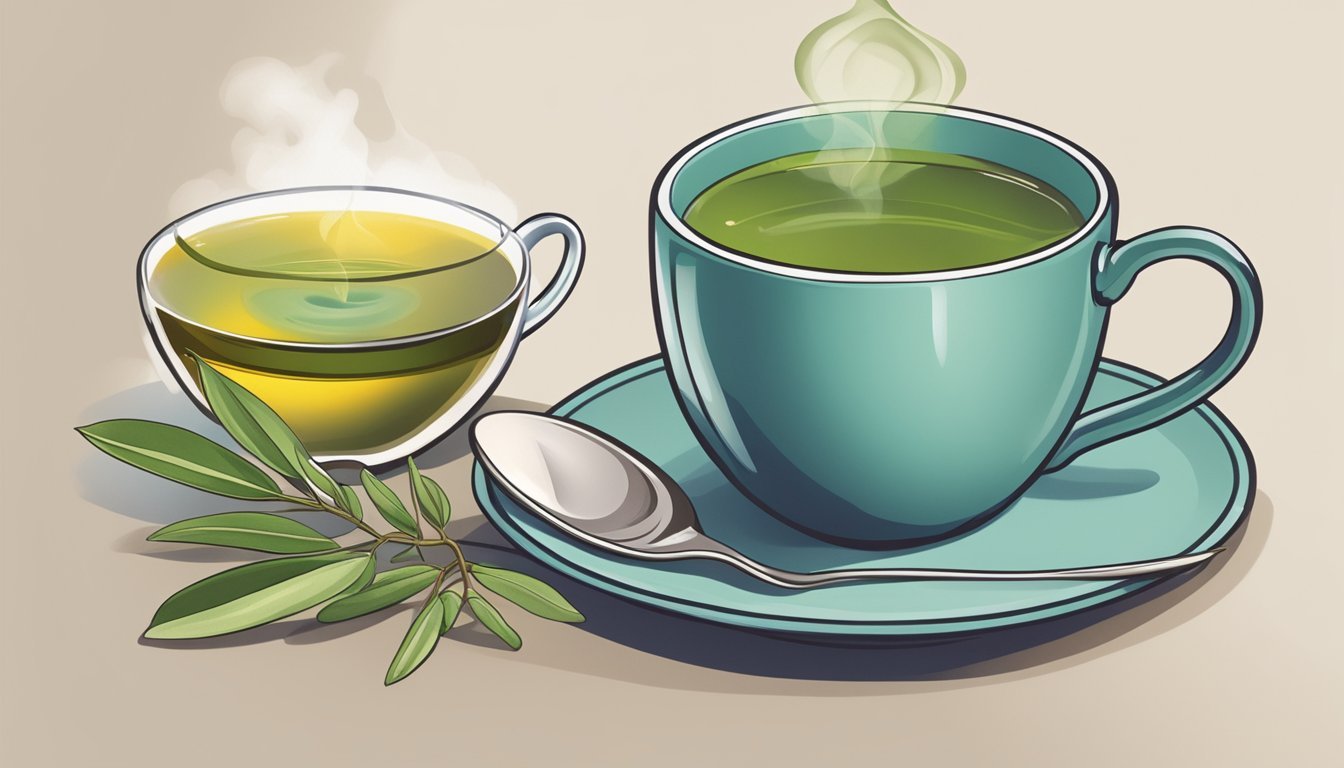How to Substitute Olive Leaf Tea for Green Tea
A Simple Guide to Making the Switch
Olive leaf tea is emerging as a noteworthy substitute for green tea, making headway in health circles for its rich antioxidant profile. Made from the leaves of the olive tree, this herbal infusion is recognized for having double the antioxidants of green tea and boasting a higher content of Vitamin C. Such properties catapult olive leaf tea to a position of esteem among those who seek the health benefits commonly associated with green tea but are perhaps looking for a different flavor profile or are interested in diversifying their antioxidant sources.
Green tea has long been lauded for its health benefits, including its role in reducing inflammation and aiding weight management, but olive leaf tea presents similar health-promoting characteristics. Olive leaf tea not only offers antiviral properties but also potential benefits for cholesterol and blood pressure management, bolstering the immune system, and combating oxidative stress due to the presence of free radical-fighting antioxidants. This similarity in benefits positions olive leaf tea as a viable and beneficial green tea alternative, especially for individuals sensitive to caffeine or those simply seeking variety in their tea consumption.
Understanding Green Tea
Green tea is renowned for its varied types and health benefits. It is prepared using specific methods that influence both its taste and nutrient content, with caffeine levels playing a role in its effects on the body.
Origin and Types
Green tea originates from the Camellia sinensis plant, the same plant that produces black and oolong teas. The primary distinction lies in the processing; green tea leaves are steamed or pan-fired to prevent oxidation, keeping the leaves green. Notable varieties include:
Sencha: A popular Japanese green tea, rolled and steamed to preserve its color and taste.
Dragon Well (Longjing): A distinctive, pan-fired Chinese green tea with a flattened shape.
Matcha: Shade-grown and stone-ground into a fine powder, renowned for its rich flavor and ceremonial use.
Potential Health Benefits
Green tea is high in antioxidants such as polyphenols which include catechins known for their potential health benefits. Regular consumption of green tea may:
Reduce the risk of heart disease by improving cholesterol levels.
Aid in managing diabetes by stabilizing blood sugar levels.
Offer protective effects against certain types of cancer.
Preparation Methods
To maintain the integrity of green tea's flavor and health compounds, it should be brewed with water at a temperature of 170-180°F (77-82°C). The process typically involves:
Placing 1-2 teaspoons of dried tea leaves or a tea bag in a cup or teapot.
Pouring hot water over the leaves.
Allowing the tea to steep for 1-3 minutes.
Caffeine Content and Effects
Green tea contains caffeine, although in smaller amounts compared to black tea or coffee. This stimulant can enhance alertness and focus when consumed in moderation. The caffeine content varies among green tea types but generally ranges from:
Type of Green Tea Approximate Caffeine Content per 8 oz cup Sencha 20-30 mg Dragon Well 15-20 mg Matcha 35-40 mg
Proper brewing methods can help control caffeine extraction, providing a customizable balance between stimulation and relaxation.
The Basics of Olive Leaf Tea
Olive Leaf Tea emerges as a robust herbal alternative to green tea, boasting a rich history, distinctive characteristics, and an array of health benefits, rendering it a worthy addition to any tea connoisseur's collection.
Historical Use and Significance
The olive tree, a symbol of peace and prosperity in Ancient Egypt and the greater Mediterranean, is where the journey of Olive Leaf Tea begins. Historically, olive leaves were valued for their healing properties, and their use in traditional medicine is well-documented. Olive Leaf Tea now captures the essence of this ancient wisdom, offering a caffeine-free alternative to conventional teas.
Distinguishing Features
Olive Leaf Tea is derived from the leaves of the olive tree, a perennial fixture of the Mediterranean landscape. Utterly distinct from common herbal teas, its features include:
Flavor Profile: A milder taste compared to green tea, with subtle bitter notes and a sweeter undertone.
Appearance: It typically presents as a golden or amber infusion.
Olive Leaves: These are typically dried and then steeped to prepare the tea, containing key active compounds such as oleuropein.
Health and Therapeutic Benefits
Renowned for its health-promoting constituents, Olive Leaf Tea provides various therapeutic benefits. This tea is particularly noted for its:
Antioxidant Capacity: It helps combat oxidative stress by neutralizing harmful free radicals.
Oleuropein Content: A beneficial compound linked with reducing blood pressure and improving cardiovascular health.
Anti-inflammatory Properties: It may play a role in reducing inflammation throughout the body.
Immune System Support: Regular consumption could enhance the immune system's function.
Overall, Olive Leaf Tea not only offers a unique taste experience but also contributes positively to one's health regimen, particularly for those seeking herbal, caffeine-free options.
Substituting Olive Leaf Tea for Green Tea
When considering a substitution of green tea with olive leaf tea, it's important to explore the flavor profile, nutritional content, and the health implications of making such a switch.
Comparison of Flavors and Aromas
Green Tea:
Flavor: Typically has a fresh, grassy, and sometimes astringent taste.
Aroma: Can range from toasty to floral, depending on the variety.
Olive Leaf Tea:
Flavor: Often described as milder than green tea, with a slight sweetness and less bitterness.
Aroma: Carries a unique, herbal scent reminiscent of olives (What wine goes well with olives?) with a subtle tea-like background.
Nutritional and Antioxidant Properties
Both green tea and olive leaf tea are rich in antioxidants, although they differ in their specific compounds:
Green Tea Antioxidants:
Catechins: Significant amounts, including epigallocatechin gallate (EGCG).
Flavonoids: Contribute to various health benefits.
Olive Leaf Tea Antioxidants:
Oleuropein: A potent antioxidant compound unique to the olive tree.
Polyphenols: Known for their anti-inflammatory properties.
Olive leaf tea's polyphenols, like those in green tea, may contribute to reducing bad LDL cholesterol and can be a suitable alternative for those seeking varied antioxidant sources in their diet.
Health Implications of Substitution
The transition from green tea to olive leaf tea can have different health implications:
Heart Disease and Cholesterol:
Olive leaf tea is recognized for its potential to lower LDL cholesterol, much like green tea, which may be beneficial for heart health.
Blood Sugar Levels and Diabetes:
Green tea is linked to improved blood sugar control. While olive leaf tea is less researched in this area, its antioxidants are also believed to support healthy blood sugar levels.
Side Effects:
Overconsumption of either tea can lead to side effects such as stomach irritation or acid reflux. Olive leaf tea, when consumed too strong or in high doses, may also cause headaches or stomach pain.
Substituting green tea with olive leaf tea offers a change in flavor and variety in antioxidant intake but one should be mindful of the potential for mild side effects and the need for more research on certain health benefits.
Practical Tips for Preparing Olive Leaf Tea
Preparing olive leaf tea as a substitute for green tea involves selecting quality leaves, understanding the brewing steps, and knowing how to enhance the flavor to your taste.
Choosing the Right Leaves and Extracts
The selection of olive leaves is crucial for a quality cup of tea. One should seek dried olive leaves that are free from blemishes and have a vibrant green hue, indicating freshness. Additionally, for those preferring a more concentrated flavor or health benefits, olive leaf extracts are available in liquid form, which can be diluted with water as a substitute for the tea brewing process.
Step-by-Step Brewing Process
A precise brewing method ensures a perfect cup of olive leaf tea. Follow these steps for optimal results:
Heat the Water: Bring water to just before boiling at approximately 200 degrees Fahrenheit.
Prepare the Leaves: If using dried leaves, crush or tear them to release flavor. For one cup of tea, use one to two tablespoons of leaves.
Steep: Place the leaves in the hot water and allow them to steep for about 10 minutes.
Strain: After steeping, remove the leaves from the water using a strainer to avoid having any leaf residue in your tea.
Accompaniments and Flavor Enhancers
While olive leaf tea has its distinctive taste, one can enhance the flavor with natural sweeteners and other accompaniments such as:
Honey: Add a teaspoon of honey to introduce a soothing, natural sweetness.
Lemon: Squeeze a bit of lemon juice for a citrus twist that complements the tea's flavor.
Mint: A few mint leaves can offer a refreshing lift and a pleasant aroma when steeped with the olive leaves.
The use of these components allows customization of the tea to individual preference while maintaining the integrity of the olive leaf's unique characteristics.
Incorporating Olive Leaf Tea into Your Lifestyle
Transitioning to a lifestyle that includes olive leaf tea as a substitute for green tea can offer alternative health benefits and a refreshing change to your daily routine. It is crucial to understand how to incorporate this herbal tea while considering its impact on your health and daily diet.
Moderation and Dietary Considerations
When integrating olive leaf tea into your lifestyle, it’s important to practice moderation. As a potent herbal tea, olive leaf could influence metabolism and weight management. To maintain a balanced diet, consider the following guidelines:
Start Slowly: Gradually introduce olive leaf tea, replacing one cup of green tea at a time.
Observe Body Responses: Monitor changes in your Body Mass Index (BMI) as olive leaf tea may influence weight loss.
Potential Risks and Side Effects
While olive leaf tea is generally safe, potential side effects such as headache, dizziness, or muscle discomfort can occur. These are particularly important to consider if you have existing health conditions or are taking medications. Here are some precautions:
Consult Healthcare Providers: Before significant dietary changes, especially if on medication or managing chronic conditions.
Monitor Reactions: Pay attention to any adverse reactions after consumption, and adjust accordingly.
Side Effect Precautionary Action Headache Reduce intake; monitor hydration levels Dizziness Stand up slowly; monitor blood pressure Muscle Discomfort Consider dose adjustment
Enhancing Well-being and Immunity
Olive leaf tea has been associated with benefits such as bolstering the immune system, anti-aging properties, reducing stress, and could potentially help in preventing Alzheimer’s Disease and dementia. Incorporating it into your lifestyle may enhance overall well-being:
Immune Support: Regular consumption may strengthen immune defense.
Cognitive Health: The antioxidants in olive leaf tea might help in maintaining cognitive function.
Remember to approach olive leaf tea as a complementary addition to a varied and balanced diet. Its natural properties can contribute to a healthful lifestyle when consumed with awareness of its effects on the body.
Advanced Knowledge and Further Reading
This section provides an in-depth look at the substantiated research, diverse tea comparisons, and the rich historical tapestry surrounding olive leaf tea as a beneficial substitute for green tea.
Scientific Studies and Evidence
Research indicates that olive leaf tea possesses a variety of health-promoting properties due to its active compounds, such as oleuropein and hydroxytyrosol. Clinical trials have shown that these antioxidants may contribute to reducing inflammation and exhibits antimicrobial and antiviral activities. The efficacy of olive leaf tea can be found detailed in scientific journals, where studies highlight its potential in lowering cholesterol and supporting immune function.
Comparison with Other Teas
Olive leaf tea offers a distinct flavor profile and health benefits when compared to other teas. Here is a brief comparison:
Black Tea: Generally stronger in flavor; lacks specific antioxidants found in olive leaf tea.
Green Tea: Similar in taste, yet olive leaf tea is milder and less bitter.
White Tea and Oolong Tea: Both differ in taste from olive leaf tea and contain different concentrations of catechins.
Herbal Teas: A category that includes chamomile, rooibos, and olive leaf tea, each with its own unique set of health benefits and antioxidants.
It's important to note that while other teas like chamomile or rooibos are caffeine-free, olive leaf tea's benefits are most comparable to those found in green tea, without the caffeine content.
Cultural Significance and History
Olive leaf tea has been part of the herbal repertoire since Ancient Egypt and holds significant cultural importance in the Mediterranean regions. It was traditionally valued for its healing properties and remains a staple in many health-conscious communities today. The history of olive cultivation and usage for health-related purposes is well-documented through historical texts and contributes to the understanding of its current use as a herbal tea.

